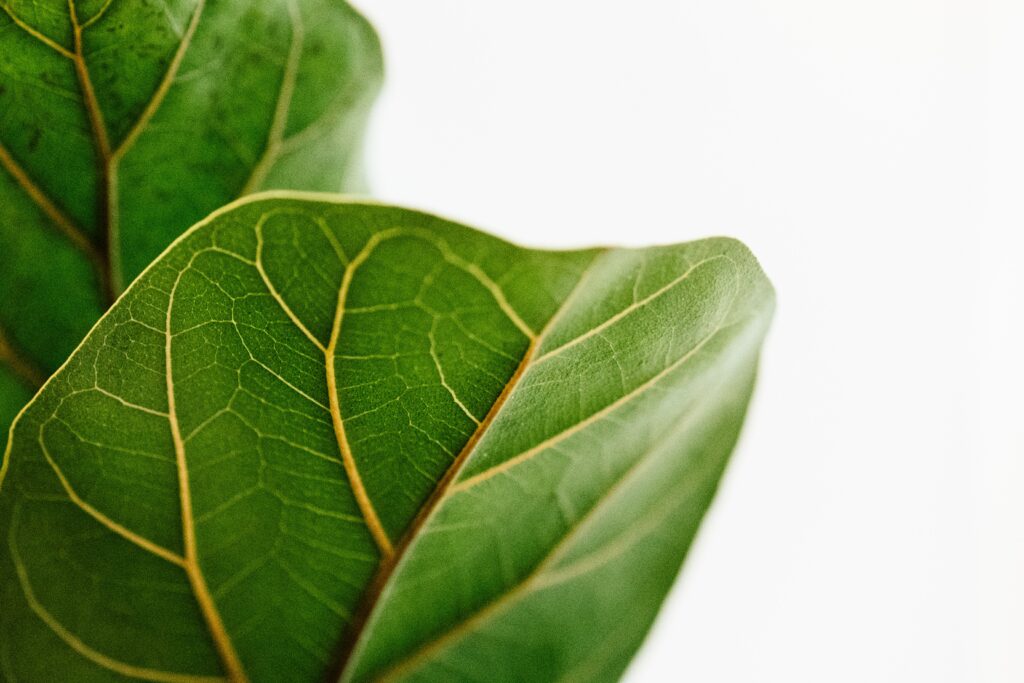If you’ve ever been enchanted by the serene beauty of a Japanese garden, you may have wondered about the plants that create such an ethereal atmosphere. In this starter guide, you will embark on a journey through the world of Japanese garden plants, learning about the unique characteristics and symbolism behind these botanical treasures. From delicate cherry blossoms to vibrant maple trees, get ready to discover the key elements that make Japanese gardens so captivating.
Choosing the Right Plants
Consider the Climate
When choosing plants for your Japanese garden, it is important to consider the climate in your area. Japanese gardens are often designed to harmonize with nature, so it is best to choose plants that are well-suited to the climate and growing conditions of your region. Consider factors such as temperature, rainfall, and sunlight when selecting plants to ensure their health and longevity in your garden.
Understand the Purpose of Your Garden
Before selecting plants for your Japanese garden, it is essential to understand the purpose or theme you want to convey. Japanese gardens can serve various purposes, such as creating a tranquil retreat, showcasing seasonal beauty, or celebrating specific elements of Japanese culture. By clarifying the purpose of your garden, you can choose plants that align with your vision and create a cohesive and harmonious space.
Research the Traditional Japanese Plants
To truly capture the essence of a Japanese garden, it is important to incorporate traditional Japanese plants. These plants have been cultivated and celebrated in Japanese culture for centuries, and they possess a unique beauty and symbolism. Some examples of traditional Japanese plants include cherry blossom trees (sakura), Japanese maple (momiji), bamboo (take), azaleas (tsutsuji), and black pine (kuro-matsu). Researching these plants and understanding their significance can help you make informed choices for your garden.
Choose Plants with Different Blooming Seasons
In Japanese garden design, the concept of seasonal beauty plays a significant role. To create a visually stunning and ever-changing landscape, consider selecting plants with different blooming seasons. By incorporating plants that bloom at different times throughout the year, you can ensure that your garden will have something in bloom regardless of the season. This dynamic element adds depth and interest to your Japanese garden.
Consider the Plant’s Size and Growth Habit
When choosing plants for your Japanese garden, it is crucial to consider their size and growth habit. Japanese gardens often prioritize simplicity and balance, so selecting plants that are appropriately scaled and have a harmonious growth habit is essential. Take note of the final size of the plants you choose and ensure they will fit seamlessly into the overall composition of your garden. Additionally, consider how the plants will grow over time and whether they require regular pruning or maintenance to maintain their desired shape.
Creating a Balanced Composition
Understand the Concept of Wabi-Sabi
Wabi-sabi is a fundamental concept in Japanese aesthetics and plays a significant role in Japanese garden design. It embraces the beauty of imperfections, transience, and simplicity. To create a balanced composition in your Japanese garden, it is essential to understand and incorporate the principles of wabi-sabi. Embrace asymmetry, weathered elements, and natural imperfections to achieve a sense of tranquility and harmony within your garden.
Use the Rule of Three
In Japanese garden design, the rule of three is often applied to create balance and harmony. By grouping elements or plants in threes, the landscape becomes visually pleasing and symmetrical. This rule can be applied to various aspects of your garden, such as selecting three different plant species, arranging three stones, or using three lanterns. The rule of three adds a sense of rhythm and balance to your garden’s composition.
Select Plants of Different Heights
To create a visually dynamic and balanced composition in your Japanese garden, it is essential to select plants of different heights. By incorporating plants that vary in height, you can create layers and depth within the landscape. Tall, upright plants can provide a sense of scale and vertical interest, while lower-growing plants can create a lush and textured foreground. This variation in heights adds depth and visual interest to your garden design.
Create Contrasts with Colors and Textures
Japanese gardens are known for their careful consideration of color and texture. To create a balanced composition, aim to create contrasts with colors and textures. Select plants with foliage that varies in color, such as vibrant greens, deep purples, or variegated patterns. Additionally, incorporate plants with different textures, such as smooth leaves, feathery foliage, or delicate blooms. These contrasts in color and texture add visual interest and depth to your garden.
Incorporate Evergreen and Deciduous Plants
To maintain a sense of visual interest throughout the year, it is beneficial to incorporate both evergreen and deciduous plants in your Japanese garden. Evergreen plants provide year-round foliage and structure, while deciduous plants offer seasonal changes and vibrant autumn colors. By blending these two types of plants, you can create a garden that remains visually appealing in every season.

Essential Japanese Plants for the Garden
Cherry Blossom Trees (Sakura)
Cherry blossom trees, or sakura, are synonymous with Japanese gardens and are treasured for their ephemeral beauty. Their blooming period, known as Hanami, is highly anticipated in Japan and showcases the symbol of renewal and the transient nature of life. Elegant and delicate, cherry blossom trees are a stunning addition to any Japanese garden, representing a sense of beauty and the fleeting nature of existence.
Japanese Maple (Momiji)
Japanese maple, or momiji, is a highly popular plant in Japanese garden design due to its vibrant foliage and graceful structure. With a range of cultivars offering a variety of leaf colors, including bright reds, oranges, and yellows, Japanese maples provide a striking visual display. Their compact size makes them suitable for smaller gardens or as focal points within larger landscapes.
Bamboo (Take)
Bamboo, or take, is a staple in Japanese garden design, capturing the essence of simplicity and strength. Its tall and slender form adds a vertical dimension to the landscape, creating a sense of privacy and tranquility. Bamboo is highly versatile and can be used as a natural privacy screen, windbreaker, or to create unique textures and sounds within your garden.
Azaleas (Tsutsuji)
Azaleas, or tsutsuji, are cherished for their stunning blooms and evergreen foliage. With a variety of flower colors, they offer a vibrant and visually captivating display. Azaleas thrive in acidic soil and provide a burst of color to your Japanese garden, particularly in the spring when they are in full bloom. Their compact size makes them ideal for borders, pathways, or as accents around ponds or water features.
Black Pine (Kuro-Matsu)
Black pine, or kuro-matsu, is a quintessential tree in Japanese garden design due to its striking silhouette, rugged appearance, and adaptability to various growing conditions. Its dark green needles contrast beautifully against other plants and add a sense of depth and texture to the landscape. Black pine is often pruned and trained to create unique and artistic shapes, such as bonsai or cloud pruning.
Pruning and Maintenance Techniques
Regular Pruning for Shape and Health
Pruning is a crucial practice in maintaining the shape, health, and overall aesthetics of your Japanese garden. Regular pruning helps control the size and shape of your plants, prevents overcrowding, and promotes air circulation. It is essential to research the specific pruning requirements of each plant in your garden to ensure proper technique and timing. By pruning regularly, you can maintain the desired form and enhance the beauty of your garden.
Understanding Different Pruning Techniques
Japanese garden design incorporates various pruning techniques, such as niwaki and bonsai, to create unique shapes and forms. Niwaki, or garden trees, focus on training trees into sculptural shapes that mimic nature. Bonsai, on the other hand, is the art of growing miniature trees in containers, allowing for precise control over their growth and form. Understanding these pruning techniques and their principles can help you create exquisite and artistic elements within your garden.
Implementing Moss as Ground Cover
Moss is a traditional and highly valued element in Japanese gardens. It provides a lush and velvety ground cover that adds a sense of serenity and age to the landscape. Moss thrives in shaded, moist areas and can be encouraged to grow by keeping the soil consistently damp. By implementing moss as ground cover, you can create a visually cohesive and serene environment within your garden.
Weeding and Mulching
To maintain the overall health and appearance of your Japanese garden, it is important to prioritize weeding and mulching. Weeds can disrupt the harmony and beauty of your garden, so regular weeding is essential to keep them at bay. Mulching helps retain moisture in the soil and suppresses weed growth while providing insulation to plant roots. By regularly weeding and mulching, you can ensure that your garden remains pristine and visually appealing.

Water Features and Stones
Incorporating Water for Serenity
Water features play a significant role in Japanese garden design, symbolizing tranquility, purity, and life. By incorporating water elements such as ponds, streams, or waterfalls, you can create a serene and calming atmosphere within your garden. The gentle sound of running water adds an auditory element to the space, enhancing the overall sensory experience.
Choosing the Right Type of Stone
Stones have profound symbolism in Japanese culture and are an integral part of Japanese garden design. When selecting stones for your garden, it is important to consider their shape, size, color, and texture. Flat stones, known as stepping stones, can be used to create pathways or bridges, while larger stones can serve as focal points or accents. Choose stones that resonate with the desired atmosphere and theme of your garden.
Placing Stones with Intention
The placement of stones in a Japanese garden should be deliberate and intentional. Each stone should have a purpose and contribute to the overall composition and balance of the landscape. Consider the principles of wabi-sabi and the rule of three when arranging stones. The asymmetry and careful positioning of stones create a sense of visual harmony and rhythm within the garden.
Creating Rock Gardens and Waterfalls
Rock gardens, known as karesansui, are an iconic element in Japanese garden design. They aim to mimic natural landscapes, such as mountains, rivers, or seascapes, using carefully arranged stones, sand, and gravel. These minimalist and contemplative spaces create a sense of tranquility and contemplation. Waterfalls can also be incorporated into the design of rock gardens, adding movement and sound to the serene environment.
Understanding the Role of Bridges
Symbolism and Practicality of Bridges
Bridges are not only practical elements in a Japanese garden, but they also hold deep symbolism. They symbolize the transition from the mundane world to a sacred or spiritual space. Bridges can connect different areas of the garden, provide access to islands or viewpoints, or simply act as decorative features. Consider the intended purpose and symbolism when selecting and placing bridges in your garden.
Different Types of Bridges in Japanese Gardens
Japanese gardens feature various types of bridges, each with its distinctive characteristics and appeal. Some common types include arched bridges (taikobashi), flat bridges (hirabashi), and zigzag bridges (yatsuhashi). Arched bridges create a sense of elegance and grace, while flat bridges offer a simple and unobtrusive option. Zigzag bridges add an element of playfulness and provide unique vantage points within the garden. Explore the different types of bridges to find one that complements your garden’s style and theme.
Integration of Bridges with Surrounding Elements
When integrating bridges into your Japanese garden, it is important to ensure they harmonize with the surrounding elements. Consider the materials, colors, and textures of the bridge and how they interact with the plants, water features, or stones nearby. By seamlessly integrating the bridge into the natural landscape, you can create a cohesive and visually appealing composition within your garden.

Fragrance and Texture in Japanese Gardens
Introducing Fragrant Flowers and Shrubs
Fragrance plays a significant role in Japanese garden design, engaging the sense of smell and enhancing the overall sensory experience. Introduce fragrant flowers and shrubs such as Japanese wisteria (fuji), sweet osmanthus (kinmokusei), or Japanese honeysuckle (suikazura) into your garden. These plants release beguiling scents that create a serene and inviting atmosphere within your garden.
Exploring Different Textures
Texture is a crucial element in Japanese garden design, adding depth and visual interest to the landscape. Explore different textures by incorporating a variety of plants with contrasting foliage. Mix smooth-leafed plants, such as Japanese painted fern (matsukawa-haken), with plants that have feathery or rough foliage, like Japanese pampas grass (susuki). These contrasting textures create a visually dynamic and captivating environment.
Incorporating Ornamental Grasses
Ornamental grasses are an excellent addition to Japanese gardens, providing delicate movements and graceful forms. Grasses such as Japanese forest grass (hakonechloa), fountain grass (pennisetum), or feather reed grass (calamagrostis) offer a range of colors and textures. Incorporating these grasses adds a sense of movement and rhythm, bringing life and vibrancy to your garden.
Using Moss and Gravel for Texture
Moss and gravel are traditional elements used in Japanese gardens to enhance texture and visual appeal. Moss creates a lush and velvety carpet-like texture, while gravel adds a sleek and understated elegance. By incorporating moss and gravel strategically, you can create visually pleasing paths, accents, or ground covers. These elements contribute to the overall aesthetic and sensory experience of your Japanese garden.
Adding Accents and Decorative Elements
Stone Lanterns (Toro)
Stone lanterns, or toro, are iconic decorative elements in Japanese gardens. They provide both practical and aesthetic purposes, serving as a source of light and adding an enchanting ambiance. Stone lanterns come in various styles, such as pagoda-shaped or hanging lanterns, and can be placed strategically to create focal points or guide visitors along paths. Their weathered appearance adds a sense of age and timelessness to your garden.
Bonsai Trees
Bonsai is an ancient Japanese art form that involves training and shaping miniature trees in containers. Bonsai trees can be exquisite accents within a Japanese garden, adding a sense of artistry and meticulous attention to detail. Choose bonsai trees that are well-suited to your region’s climate and aesthetics, such as Japanese black pine (kuromatsu), Japanese maple (momiji), or juniper (shimpaku). Bonsai trees require regular care and maintenance, but their beauty and symbolism make it worth the effort.
Teahouses and Arbors
Teahouses, or chashitsu, and arbors, or tōrōrō, are important architectural elements in Japanese gardens. Teahouses provide a space for traditional tea ceremonies, while arbors offer shaded seating areas for relaxation and contemplation. Both structures contribute to the overall design and ambiance of the garden, creating intimate spaces that foster a connection with nature. Incorporate teahouses or arbors in your garden to elevate its authenticity and purpose.
Decorative Fences (Tsukubai)
Decorative fences, also known as tsukubai, can be used to delineate areas within your Japanese garden or act as focal points. These fences are typically made from bamboo, wood, or stone and often feature intricate designs or patterns. Decorative fences provide a sense of privacy and enclosure while adding an aesthetic and symbolic element to your garden. Consider incorporating tsukubai into your garden design to define spaces or create visual interest.
Creating a Tranquil Atmosphere
Implementing Seating Areas
Seating areas are essential in Japanese gardens, offering opportunities for relaxation, contemplation, and appreciation of the surrounding beauty. Place benches, stone seating, or Japanese-style tatami mats strategically within your garden to create inviting spaces. These seating areas can be positioned to take advantage of picturesque views, water features, or serene elements. Implementing seating areas allows you to fully enjoy the tranquility and beauty of your Japanese garden.
Using Wind Chimes and Water Fountains
Sounds play a vital role in Japanese garden design, adding another layer of sensory experience. Incorporate wind chimes or water fountains to create soothing sounds within your garden. The gentle tinkling of wind chimes or the trickling of water from a fountain creates a calming and peaceful atmosphere. These features can be positioned strategically to maximize their effect and enhance the overall ambience of your garden.
Creating Zen Gardens
Zen gardens, also known as dry rock or sand gardens, are minimalist and contemplative spaces that invite meditation and introspection. These gardens often feature raked gravel or sand to represent flowing water or sea waves and strategically placed rocks to mimic mountains or islands. Zen gardens create a sense of tranquility and simplicity, allowing visitors to find peace and serenity within the garden.
Designing Paths for Tranquility
Paths in a Japanese garden serve as a journey through the landscape, providing a sense of discovery and contemplation. Design paths that meander gracefully, following the natural flow of the terrain and guiding visitors through various elements of your garden. Incorporate stepping stones, gravel, or wooden walkways to create a soft and inviting path. Designing paths that encourage a slow and mindful pace allows visitors to fully immerse themselves in the tranquility of the garden.
Understanding the Principles of Japanese Garden Design
Harmony with Nature (Shizen)
Harmony with nature, or shizen, is a fundamental principle in Japanese garden design. It involves creating a space that seamlessly integrates with the surrounding environment, mimicking natural landscapes and showcasing the beauty of the changing seasons. By selecting native or well-adapted plants and incorporating elements such as water, stones, and textures found in nature, you can achieve a harmonious and balanced Japanese garden.
Balance and Symmetry (Fukinsei)
Balance and symmetry are key principles in Japanese garden design, reflecting an idealized sense of order and harmony. By carefully arranging plants, stones, or decorative elements, you can create a visually pleasing and symmetrical composition. However, it is essential to embrace asymmetry and imperfection while maintaining overall balance. This principle allows for a natural and organic aesthetic that captures the essence of Japanese garden design.
Gratitude and Simplicity (Kanso)
Gratitude and simplicity, or kanso, are embodied in Japanese garden design, emphasizing the appreciation of modest beauty and minimalism. By expressing gratitude for the natural world and embracing a sense of simplicity, you can create a tranquil and serene atmosphere within your garden. Avoid excessive ornamentation or clutter, focusing on the essence of each element and allowing them to shine in their simplicity.
Emptiness and Space (Kū)
Emptiness and space, or kū, play a vital role in Japanese garden design, embodying the idea that emptiness can be filled with beauty and potential. By incorporating open spaces, such as gravel or sand areas in a Zen garden, or creating visual pauses within the landscape, you can create a sense of spaciousness and tranquility. Embracing emptiness allows for contemplation, reflection, and appreciation of the surrounding elements.
In conclusion, creating a Japanese garden involves careful consideration of plant selection, composition, pruning techniques, water features, stone placement, accents, and the principles of Japanese garden design. By following these guidelines and exploring the rich tradition and symbolism of Japanese gardens, you can create a visually stunning, serene, and harmonious space that brings you closer to nature and provides a sanctuary for tranquility and reflection. With each plant, stone, and design element, you have the opportunity to bring the beauty and essence of Japan into your own backyard.








